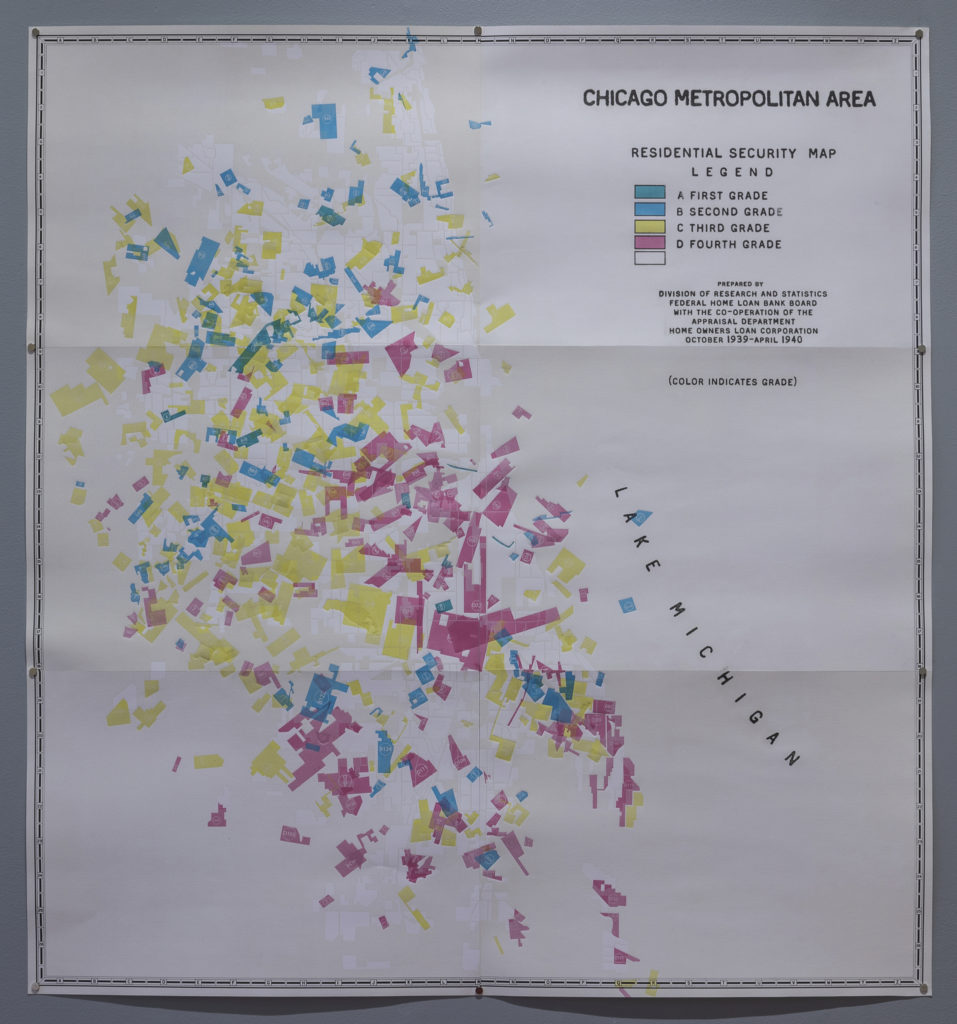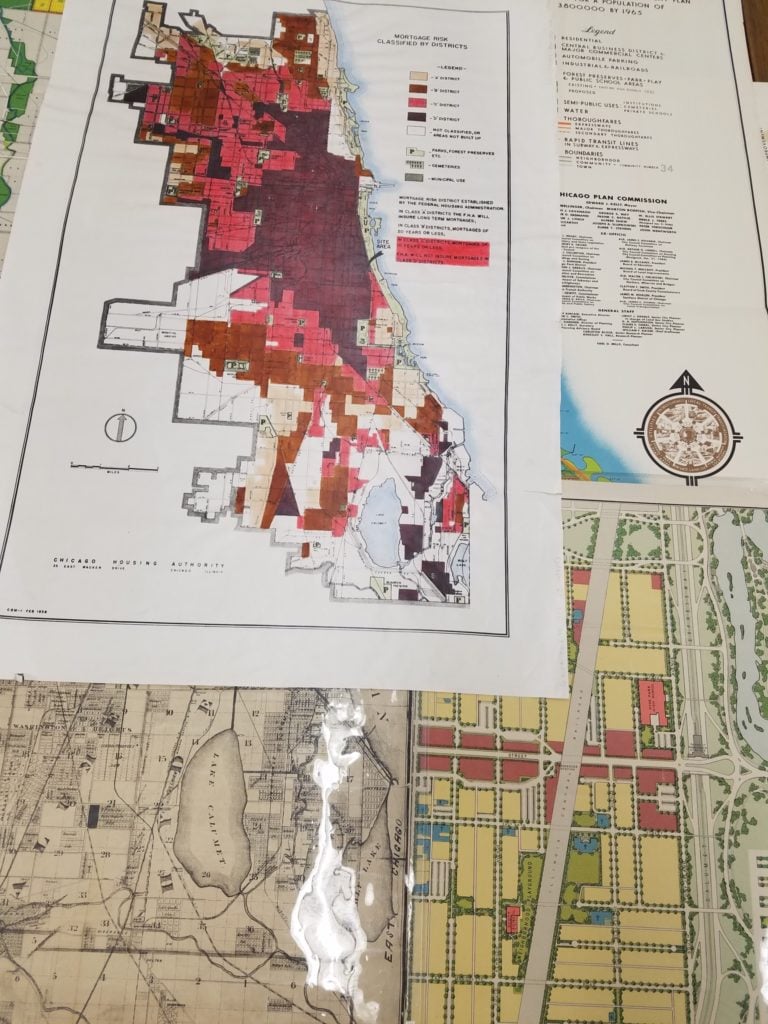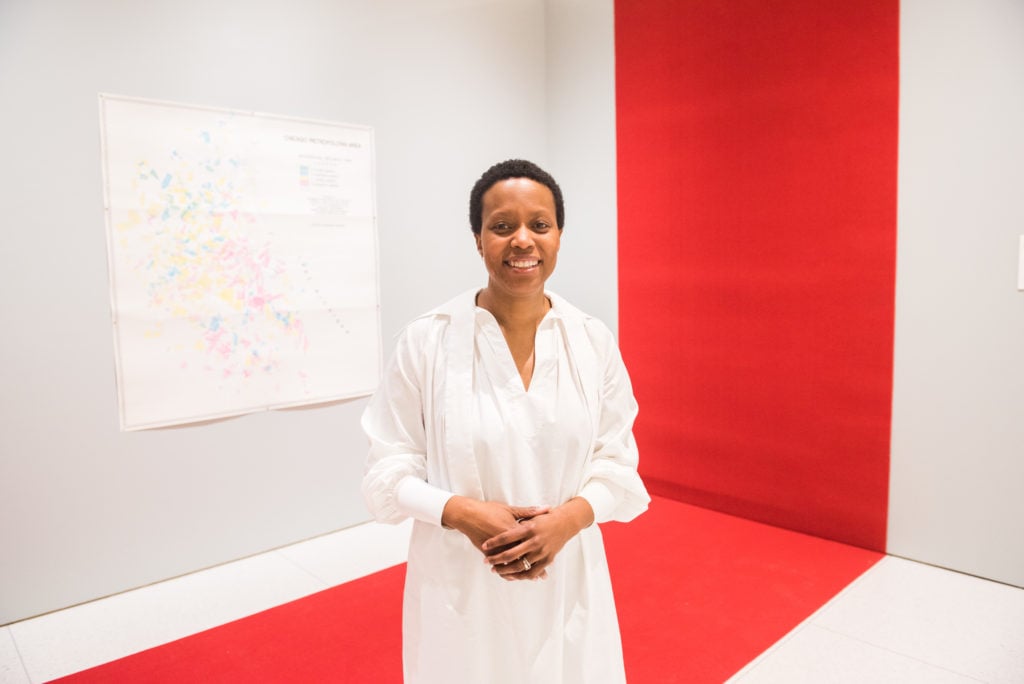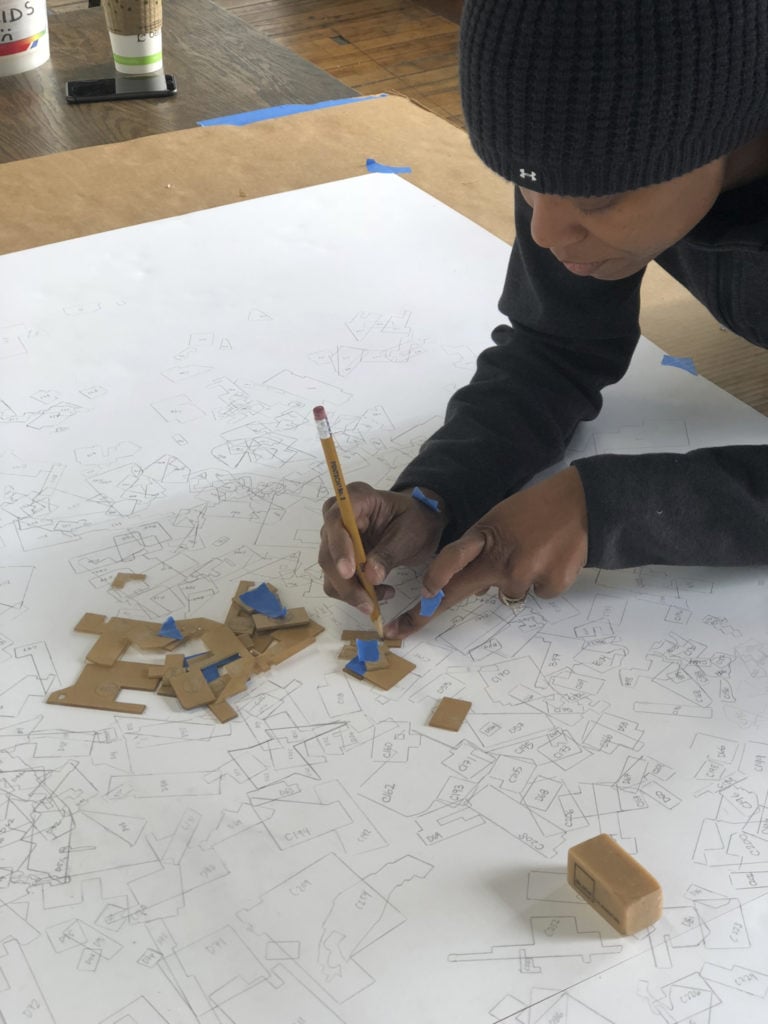After Lori Lightfoot was sworn in yesterday as the 56th mayor of Chicago, officially becoming the first African American woman and the first openly LGBTQ person to hold the office, she unveiled her newly decorated office with a last-minute loan from the Smart Museum of Art on the South Side of the city.
Less than 24 hours earlier, the work, commissioned by the museum from artist Amanda Williams, was still at the museum as part of an exhibition titled “Solidary & Solitary” featuring works by African American artists from the collection of Pamela J. Joyner and Alfred J. Giuffrida.
So when Alison Gass, the museum’s director, got the request, there was no time to spare.

Amanda Williams’s Cadastral Shaking (Chicago v1) (2019) is currently on loan to newly inaugurated Chicago Mayor Lori Lightfoot. Photo courtesy of the Smart Museum of Art, the University of Chicago.
“It was such a fun surprise over the weekend,” Gass told artnet News. “Amanda called me and said, ‘I know this is probably crazy, but Mayor Lightfoot is wondering if there is any way she can have the work the museum commissioned—and they really want it in time for inauguration, which is tomorrow.'”
The piece, a screen and relief print titled Cadastral Shaking (Chicago v1), was produced by the Chicago community print studio Spudnik Press and is part of a series that Williams and her collaborator, journalist Natalie Y. Moore, created based on maps of Chicago.
For the work, the duo drew on redlined maps of the city, which were created by the Federal Housing Administration starting in the 1930s to designate African American neighborhoods in the city as “hazardous”—and ineligible for housing loans. The practice artificially and systematically depressed housing values and triggered a cycle of economic decline that still reverberates today.

The process of making Cadastral Shaking (Chicago v1), based on the historic practice of redlining. Photo courtesy of Amanda Williams.
In Cadastral Shaking (Chicago v1), a historic, redlined map of Chicago has been rearranged in an effort to imagine how the city’s rampant inequality could be reconfigured.
“It’s such an important Chicago work. It is deeply about imagining equity across the city,” said Gass, noting that the museum used the piece as the basis for the decor at its recent gala, which is probably how it came to Lightfoot’s attention.
“Chicago is a city full of hope about shifting histories and moving toward equity, and the fact that the new mayor wanted a work of art about that says a lot,” Gass added. “We believe in the power of art to help shift perspectives, and hopefully the map in the office will help do that.”

Amanda Williams. Photo by Jean Lachat, courtesy of the Smart Museum of Art.
This is the first time that the Smart has loaned an artwork to the mayor’s office, although previous administrations have borrowed works from the Art Institute of Chicago and the Museum of Contemporary Art. (Lightfoot’s predecessor, Rahm Emanuel, selected a Seymour Rosofsky from the Art Institute and works by Miyoko Ito and Leon Golub from the MCA’s collection, according to the Chicago Tribune.)
Lightfoot has completely redecorated her office, and is also including a piece by African American photographer Lee Bey, as well as loans from the city’s DuSable Museum of African American History.
At the Smart, the tight turn around on the loan required taking down the piece a day before the show’s official May 20 closing, completely upending museum preparators’ carefully calibrated 10-day plan for turning over the galleries between shows. But there was no way that Gass wasn’t going to make it happen.

Amanda Williams in the process of making Cadastral Shaking (Chicago v1), based on the historic practice of redlining, at Spudnik Press. Photo courtesy of the artist.
“We just kind of quickly scrambled,” she said, noting that the initial loan is for six months, but that the museum would be happy to extend it. “It’s the mayor’s office!”
This isn’t the first time Williams is getting governmental attention. The artist was recently chosen, along with Olalekan Jeyifous, to create a monument in New York to Shirley Chisholm, the first black woman elected to Congress.
Follow artnet News